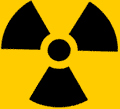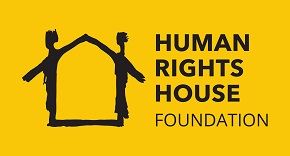SOS - Radiation
(Part I)

Inhabitants Connect Health Deterioration with Toxic Chemicals
The health of the inhabitants of the Sighnaghi region is deteriorating and there have been births of both physically and mentally disabled children. The people of the region now have no doubt that 9 year-old Giorgi’s illness is caused by chemicals scattered on the land of a nearby warehouse. Levels of fear are rising, due to the indifference and general lack of concern from the legislative and executive branches of government. The inhabitants of Sighnaghi also state that the local government forces them to remain silent about their troubles.
A warehouse used to store chemicals, was built 25 years ago on the territory of the village of Sakobo in the Sighnaghi region. The warehouse had been owned by the ‘Georgian Agricultural Service’ until 2005, although it had started to collapse long before this time. As the inhabitants of the village state, their troubles started around that time: "We did not have these kinds of problems before the warehouse was closed, whilst the chemicals were still kept according to the rules, but everything was looted during last 10-12 years. Holes were even dug and the tiles were thrown off. This is a terrible situation. The unbearable smell bothers us, especially in summer. Everyone who worked as caretakers at the warehouse has died; only one of them left the place in time, thus saving his life. While he was there, he suffered from a bad cough and experienced respiration problems too", said Ioseb Orvelashvili, who says he is also suffering from cardiovascular illness.
The chemical warehouse site covers around 3 hectares and people are living almost 10 metres from it. Near the ruins, you find torn sacks that are full of chemicals, scattered about, piled up, either burnt or ready to be burnt. The local government does not deny having knowledge of the problem. They are also aware that the health of the population is at risk, but say: "We cannot do anything about it, because we neither have the money nor sufficient experience to implement the necessary measures."
"Everybody knows about the problem - the governor and the MPs. We have applied to them in writing, but in vain. What else can we do? The village municipality can do nothing about it", says the head of the municipality of Sakobo, Nodar Kutibashvili.
Berdo Asanishvili, who has been governor of the Sighnaghi region for two years already, says that he will raise the issue eventually with higher authorities, in order that the territory is cleaned up, though he can't explain the reasons for his lack of action to date.
Tina Tsiklauri, the representative of the Kakheti Regional Board for Environmental Protection and Natural Resourses in the Sighnaghi region, says she has raised the issue with the administration and the Regional Board of the Environmental Protection of the Sighnaghi region, but she got the same answer from everyone: "It's too much for us to deal with, we have no finances."
"It's not a simple problem. I sincerely state that this is a disaster, not only for the Tsnory and Sighnaghy regions, but for the whole of Kakheti. More than 1000 tons of chemicals are kept in the warehouse: There is wet sulphur on the ground, chromium, benzoic acid and they say that there is also dioxide as well as other chemicals. All of this is scattered all over the site and the situation got worse when the fire broke out in the warehouse. Furthermore, the chemicals have dissolved and flowed into the irrigation canal, which is used by the population, and from the irrigation canal the chemicals then flow into the river Alazani. Cattle also visit the contaminated area. It's possible that a cow will survive, but a person can later get sick from consuming its meat or milk. A toxicologist visited the area and spoke to the inhabitants of the village, who said that they suffered from different kinds of diseases, mainly respiratory problems. Allergies are also widespread. A mother of two children, who lives 7 metres from a pile of chemicals, told us that her third child was born dead, the forth baby died before birth and the fifth was born disabled", said Tina Tsiklauri.
According to the information given by the Ministry of Environmental Protection and Natural Resources, the national action plan is extensive and includes the cleaning of the whole Kakheti region, both containing and removing the existing pesticides and chemicals. "The national action plan will be signed at roughly the beginning of March. By mid-March we are expecting Dutch experts, who will live in Tsnori for two weeks and will study everything in detail. The project, which is financed by a Dutch Non-Governmental Organization, includes containing, removing and rendering harmless the chemicals and pesticides. The project will also cost a serious amount of money – 2 to 3 thousand Euros per ton. I can't say exactly how the problem will be handled, but from our side the worst situation appears to be in Tsnori", said the representative of the Ministry, Nino Gabriadze.
We talked to the grandmother of 9 year old Giorgi who told us: "Giorgi's mother is providing for the family financially. The child has been disabled from birth. Anything can happen when this horrible stuff is 5 metres from our home. Other children are also sick. The adults aren't feeling very well either but what can we do, we can't live without any shelter? It's hard to go out in the summer because of the terrible smell. We have applied to different institutions for assistance but nobody pays any attention to us. We also have a right to live don’t we?" asks Lali Dudaeva.
The medical personnel of the Tsnori maternity home and district hospital are avoiding giving official comments on the subject; though in private they admit that it is the pregnant women and children who are most at risk. The local doctors also do not deny that children have been born with disabilities.
Gela Mtivlishvili from Kakheti




